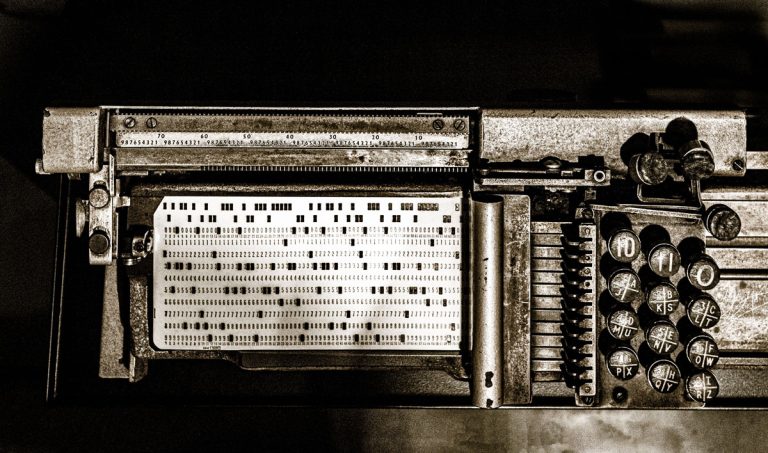Journalism techniques for avoiding criticism
There is a kind of journalist that pretends their work is beyond criticism. It’s an art form without equal in the academy or politics. To become a master requires diligence and fortitude. And ingenuity.
I’m a relatively new student of the art. But I think I’ve figured out some of the tactics.
Here’s a go at creating a rough taxonomy of techniques. You too can learn to spot them in the wild, or use them yourself!
Taxonomy of techniques for avoiding criticism
Word Limit Defence (WLD) – This tactic is used when your article is criticized for missing context or overlooking salient details. Simply focus on the word limit for your article. Tone-wise you can take this in two directions. You can adopt a swell-guy attitude and say something like “oh yeah, we tried to fit everything in, but the word limit is a real thing.” Or you can go with derision and try something like “okay jackass, next time I’ll include a history of the world in 800 words. No problem.” It works well both ways.1
Armchair Counter (AC) – This is a widely applicable counter-maneuver. It’s performed by journalists who actually believe that nobody knows how good they are at what they do. These journalists think no one understands the complexities they face, and nobody should second guess the nuanced calls they make in their reporting. But even if you don’t actually believe this, you can still use this technique. Simply tell your critic that they “don’t understand the situation” and they should stop criticizing from “their armchair.”
Fascist Counter (FC) – This is commonly operationalized by journalists who feel threatened or tend to the dramatic. This defence involves comparing the critic to a fascist dictator or regime. In this mode, all criticism is oppression. See, for example, Terence Corcoran in 2012, who famously defended Margaret Wente’s plagiarism and claimed that she “knows something of what it felt like during the Cultural Revolution in China, when ideological enforcers roamed the country to impose their views and expose running-dogs…”2
Free Speech Counter (FSC) – This is a close cousin of the Fascist Counter and often proceeds it. This tactic focuses on the legal right to publish objectionable, alienating, racist, misleading and ill-judged articles. These people can be found making rhetorical claims like, “no one has a right to not be offended,” or “our lawyers reviewed it.” This defence pretends the critic is trying to enact a legal right to unpublish a bad article, when really the critic is just saying the article is bad, racist, misleading, alienating or otherwise morally repugnant.3
Read the Article Counter (RAC) – This defence has the following form: Oh, you’re criticizing my article? Did you read it? Try reading it. Journalists who rely on this defence, are usually going on disdainfully about the readers because on their view the audience is full of ignorant people.
Hateful Person Counter (HPC) – This takes the form of, Oh, you’re criticizing my article? You must be a hater. Haters gonna hate. Go leave a comment. Or write a letter to the editor.4 This one is also very effective as a subtweet.
Stupid People Gambit (SPG) – This tactic can be used when the criticism of a given piece of journalism is that it’s causing readers to negatively impact a person or a community of people. The journalist can then respond by saying they’re not responsible for what stupid people do with the thoughts and ideas caused by their article. The idea here is that journalists are never responsible for what other people think. The stupid people are everywhere, of course. Someone reads your paper and learns to hate Muslims? Or perhaps they read your paper and now they believe climate change is a hoax enacted by frauds? It’s not your fault. Because stupid people.5
Hateful People Gambit (SPG) – This tactic can be used when the criticism of a given piece of journalism is that it’s causing readers to negatively impact a person or a community of people. The journalist can then respond by saying journalists are never responsible for what hateful people do with the thoughts and ideas caused by their article. Journalists are never responsible when their “work is hijacked!” The hateful people are everywhere, of course. Related to the Stupid People Gambit (see above).
I only Accept Criticism from Journalists Gambit (ACJG) – This has wide applicability and for those who believe no one understand how difficult their job is, it pairs nicely with the Armchair Counter.6
I Don’t Accept Criticism from certain Journalists Gambit (DACJG) – This is a nice technique if the other folks are partisan.7 Journalists using this gambit can often be overheard muttering phrases like “motivated reasoning”, “get your own story”, “stop stealing our content” and “I hope that agency rots in hell.”
Thick Skin Defence (TSD) – There is this thing that happens sometimes, when a journalist, who is so worn out and so tired and so accustom to criticism, just doesn’t care anymore. When this happens, the feedback is just tuned out. Sometimes they nod along, but the information never really gets in there.8
Numb Reader Effect (NRE) – This is the reader-version of the Thick Skin Defence. This is a defence of journalism by a reader who has grown accustom to poor journalism and has become apathetic. It’s a kind of numbness. This person thinks, who cares, journos gonna journo. So why bother wasting precious cognitive resources on them? What do you expect from such and such news agency?9
Don’t Feed The Trolls Defence (FTD) – This functions as a defence of journalism because it’s implemented by the readers who worry that the energy we put into criticizing journalism feeds the evil inside it. These readers are not intending to defend journalism, but the impact is the same.10
Criticism as Badge Maneuver (CBM) – This maneuver judo flips criticism into a good thing: criticism becomes evidence that the journalism in question is very good! Some journos even brag that they get equal amounts of criticism from what they perceive to be “both sides” of an issue.11 This strategy pretends that all criticism is motivated by politics, partisanship or public relations. Or the devil. Therefore, provoking criticism is good.
Ivory Tower Counter (ITC) – This strain of criticism-resistant thinking positions media criticism as a kind of ivory tower exercise. This dismissal accuses the critic as being too theoretical, or too intellectual, taking too long to say what they mean or of simply using big words. This is also sometimes called the Has Too Much Time Gambit. For extra points, affect a snicker.
Humorous Disdain Maneuver (HDM) – The trick here is to not grapple at all with the actual criticisms. Instead enact jocularity and be disdainful of the critic. This is also known as the Snark Maneuver. This works in almost any situation. The effectiveness of this maneuver is multiplied by the number of people you can get involved in the joke.
Journalism is Dying Defence (JDD) – Sometimes, a journalist can get so wrapped up in worry that journalism is fragile and shrinking because of The Internet and Unbundling and The Social Media12 and such-forth, they get lured into thinking that criticism of journalism is out of bounds. There is also a reader-version of this defence: maybe lay off and give them a break, because, you know, journalism is dying and maybe it’s your fault.
Personal Stake Counter (PSC) – This tactic focuses on the features of the critic that make them too personally involved to think clearly on the topic. Dan Gardner once demonstrated this counter move when a Muslim woman criticized his column on “sartorial apartheid.” According to Gardner, she was too involved. She was too close to the issue.13
No Personal Stake Counter (NPSC) – This tactic focusses on the features of the critic that make them not personally involved enough to warrant a say on the matter. Folks using this tactic can be heard saying things like, “no skin in the game” or “why is it always a dude claiming misogyny?” or “try speaking on behalf of your own interest group” or “how would you know?” Used with the Personal Stake Counter, this combo can land you utterly in the bubble of criticism-free safety.
I Didn’t Write The Headline Gambit (HG) – This can be used when the critique strays close to a notion or interpretation that might be caused by the headline. As soon as the critic wanders into this territory, get ready to unleash a “Sigh, I didn’t write the headline.” Try sounding tired of explaining this. This tactic is also called the I Hate my Employer Defence or sometimes the I’m Not Responsible For How My Work is Spun Defence.
Journalism is Really Important Gambit (JRIG) – This is really the most powerful maneuver of them all. It gets used sometimes in relation to long-standing critiques about massive historic failures of journalism.14 The tactic is easy. Try it for yourself by simply repeating, “yeah, but, journalism is really important.” This tactic is very effective if you can manage to look very sage or even whisper. Try mixing it up with an “as goes journalism, so goes democracy.” This tactic can also be used in response to terrible instances of journalism. No matter how egregious any given instance of journalism is, nor how bad any given news agency is, nor how damaging and persistent the narratives are, the trick is to repeat that, “overall, no matter how many people have been mislead, or hurt, journalism is really really good, in every context.” Yes, there is no data to substantiate this empirical, quantitative claim. But we don’t need data. Because Watergate. Because Spotlight. Because, fourth estate.
Small Community Defence (SCD) – This defence is also known as the Glass Houses Defence or the That Person Might Be My Boss Defence or even the That Company Might Own Our Agency Defence. Remember that time the Media Reporter at the Globe and Mail wrote a dispatch about the Margaret Wente plagiarism debacle that failed to use the word “plagiarism”? That article was an excellent example of this defence put to use on behalf of Wente.15
Let’s Make Do Maneuver (MDM) – Sometimes readers know that certain news agencies are terrible. I mean really terrible. But they nonetheless defend their existence, because it’s all we got. It’s a kind of look on the bright side, make-do attitude. Because, optimism! This is sometimes also known as the I Love Partisan Press Defence, or the Boys Will Be Boys Defence. The key here is to not get bogged down in details. Just reiterate the central point, which is “this all we got.”
Read the Enemy Gambit (REG) – You see this one by folks who read, or even subscribe to, bad newspapers even thought they don’t really like it. This is a relative of the This is All We Got Defence but don’t mistake it as the same thing. It takes the following form: I have to read it so I know what the enemy is thinking.
Giving Voice Gambit (GVG) – You see this sometimes once a journalist has written something tremendously wrong-headed. Then, once the feedback starts rolling in, they can say the were just giving voice to what some people think. Also, I’m just contributing to the conversation. I’m giving voice to the other people. Try it out for yourself by saying, “but it got us talking didn’t it?”
Channel Switching Maneuver (CSM) – There are many ways to implement this move. But the best way to change the channel on criticisms is to find a criticism about the criticism. For example, did someone just argue that you are propagating racist tropes of Indigenous People? That’s okay, find a detail that’s wrong in the criticism. It doesn’t matter how small. It could be a grammar or spelling mistake. Now you no longer have to deal with the substantive claims!
Blame the CBC (BCBC) – Is someone complaining that your agency has been systemically misleading readers about salient political and environmental issues? Is your news agency super white, and very racist? Don’t understand Truth and Reconciliation (PDF)? That’s okay, try blaming the CBC. Better yet, suggest that they get defunded. This is what Colby Cosh does from time to time. Very effective.16
Blame the PC Gambit (BPCG) – Is there research indicting vast swathes of your precious industry for contributing to the recent rise of white supremacy and anti-politics? No worries, just blame safe spaces and “social justice warriors”! They’ve obviously alienated the common folk, so despite what research might show, just blame the people and things you already hate, like “politcial correctness”. This is what Andrew Coyne does from time to time, to excellent effect.
Memory Hole (MH) – One of the best longstanding techniques by publishers and journalists to avoid criticism is to play down failures. Retractions, corrections and mea culpas are historically minimal affairs. More importantly, successes and failures of journalism are never tracked. Well, success are. But failures never are. Failures of journalism, no matter how egregious, are put down the memory hole.
It Could Be Worse Derailment (CBWD) – No matter how bad a given piece of journalism is, it can always be worse. So if you’re facing criticism for something you’ve written, or for your life’s work, just remind folks that journalism can always be worse. And bad is better than worse. Heck, worse makes bad look not bad. Even good. Are you the Calgary Herald? No problem, because you’re not the Calgary Sun. Are you the Sun? No problem, you’re not The Rebel. Are you the National Post? Well, at least you’re not Fox. Or, Breitbart. Right?
Have I missed some? Let me know.
- Don’t worry if your article is published online. Just focus on the constraint caused by the arbitrary word limit, and how this means that you can ignore the criticisms ↩
- http://news.nationalpost.com/full-comment/terence-corcoran-on-margaret-wente-why-we-dont-need-public-editors ↩
- The trick to pulling this one off is to exude the ideology that journalism is, by definition, noble and courageous and critics are ignoble and cowardly. Outrage also works. ↩
- Dan Gardner once accused me of trolling him. Ugh. ↩
- It’s also known as the I’m Not Responsible for Stupid People Defence and also the I’m Not Responsible for the Impact of My Work Defence. ↩
- You can sometimes see it play out amongst Canadian journos who seem willing to entertain serious criticism with each other. ↩
- This is also effective to use in concert with ACJG because it dramatically limits who can criticize you. ↩
- This is also known as the I Don’t Care Defence. ↩
- This is also known as the Just Journalism Gambit. Sometimes folks will kind of shrug in response to bad journalism. They have this kind of glaze in their eyes that says, your skin’s on too tight, it’s just journalism. If you want to use this one, but you can’t simulate the glazed eyes, just repeat the words, “your skin’s on too tight, it’s just journalism.” ↩
- It’s also known as the Please Stop Talking About Journalism Defence and it’s a close cousin of the Numb Reader Gambit. ↩
- This takes the form of: I get criticisms from the political left and the political right and so therefore I’m good at what I do. Also, climate change deniers and also climate change alarmists criticize my work and therefore I’m doing it right. ↩
- And the right wing anti-pressers ↩
- This is sometimes called the Too Partisan Maneuver. ↩
- Some probable examples of historic failures of reportage include climate change, post 9-11 weapons of mass destruction, Vietnam war, Second World War deportation of “Japanese-Canadians” (aka Canadians) to internment camps, cultural genocide (aka genocide) of Indigenous People in Canada, Indigenous land rights, issues relating to brown people, immigration, gender oppression, rape culture, and the rise of Donald Trump. ↩
- Steve Ladurantaye, media reporter, The Globe and Mail, Published Monday, Sep. 24, 2012 9:30PM EDT http://www.theglobeandmail.com/news/national/globe-takes-action-on-allegations-against-columnist-margaret-wente/article4565683/ ↩
- Colby Cosh: Help aboriginals. Defund the CBC | National Post, June 5 2015 ↩
Don’t miss a dispatch!







